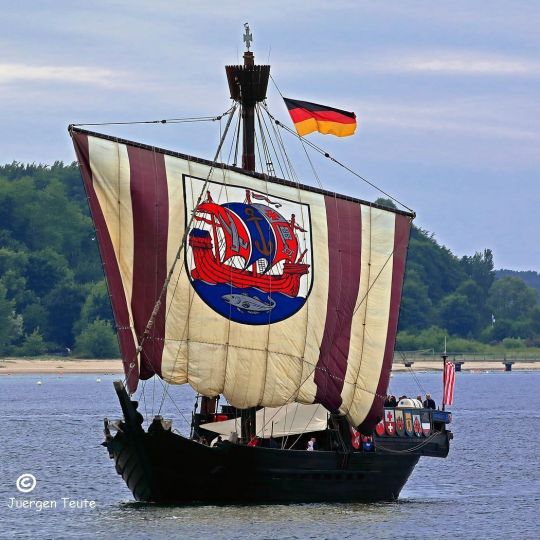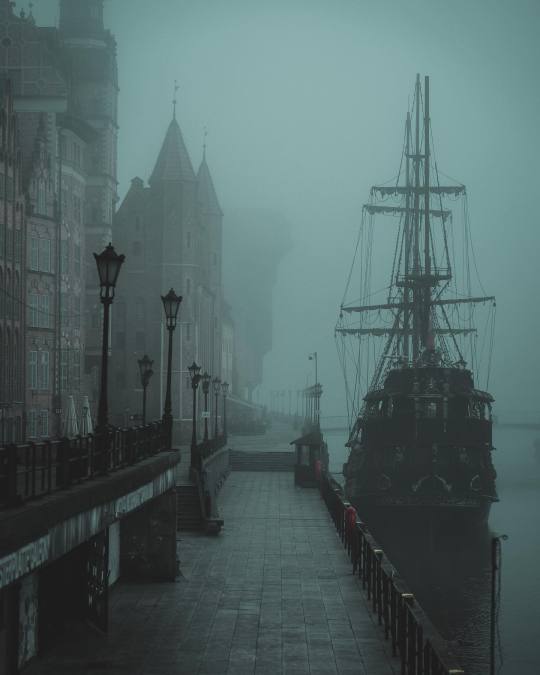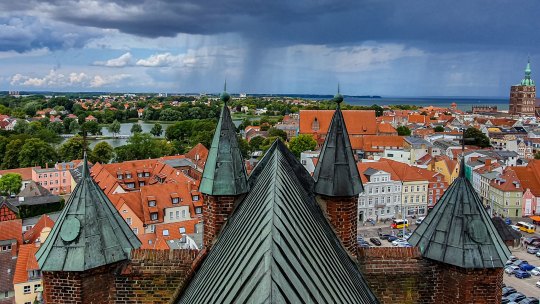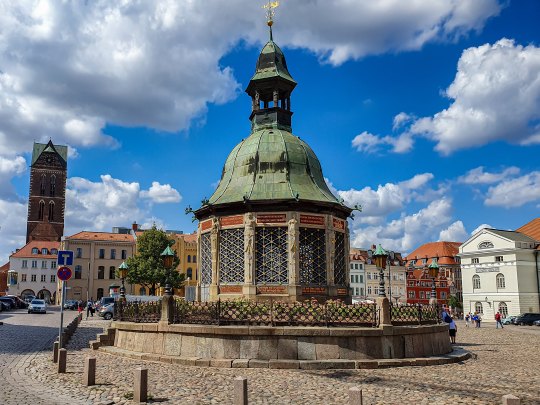#Hanseatic League
Explore tagged Tumblr posts
Text

Hey, I can't make a post for the Clans and not include the Inner Sphere as well.
#battletech#battletech memes#capellan confederation#federated suns#draconis combine#lyran commonwealth#free worlds league#federated commonwealth#free rasalhague republic#terran hegemony#magistracy of canopus#aurigan coalition#fronc reaches#taurian concordat#hanseatic league#comstar
712 notes
·
View notes
Text

Today we're going back in time again, to the time of the famous Hanseatic League. Hidden in door no. 21 is the Ubena von Bremen

More about her here:
The Ubena of Bremen is a replica of a 14th century Hanseatic cog found in the mud of the River Weser in 1962. The sensational find was reconstructed piece by piece (more than 2,000 individual parts) at the German Maritime Museum in Bremerhaven, measured and preserved for posterity in a conservation bath (800,000 litre capacity with a mixture of water and polyethylene glycol) for 15 years, and is now open to the public.
#naval history#naval artifacts#ubena von bremen#hanseatic league#14th century#medieval seafaring#replica#day 21#advent calendar
92 notes
·
View notes
Text

Trebygninger med tegltak, Bryggen, Bergen, 1976.
Thanks to its designation as a UNESCO World Heritage district, the physical fabric of Bryggen has not changed much in the past almost half century. There is much more commerce catering to tourism, however. See my photos of the district taken in September 2023 and tagged bryggen.
#urban landscape#historic district#hanseatic league#wooden#warehouses#tile#bryggen#bergen#vestlandet#norge#photographers on tumblr#black and white#1976
6 notes
·
View notes
Text
Doesburg - Hanseatic League - The Netherlands
Paid in Beer at Tax House
In medieval times workers sometimes got paid in Beer. At this Tax House in #Doesburg. De Waag: The Weighing House.
#VisitHanzeSteden #Hanze #Hanse #DieHanse #Travel #Wanderlust #History #Architecture #Europe
youtube
#travel#wanderlust#youtube#wonderjourneys#tourism#touristdestination#Hanze#Hanze steden#Doesburg#die Hanse#hanseatic#hanseatic league#Netherlands#Germany#Gelderland#medievaltown#medievaltwitter#medieval#mittelalter#archtitecture#history
1 note
·
View note
Text
ok, here goes. please ignore all the bread. oh wait there were too many, you won't see all any of the breads, hehe
All right if you see this post put in the tags a list of all the Wikipedia pages you have open in your tabs no matter how long they've been there
#Musa (genus)#Kakteen-Haage#Finke River#Indomalayan realm#Selenicereus grandiflorus#Võro language#Cow blowing#Seattle windshield pitting epidemic#Rebutia pulvinosa#Turbinicarpus laui#List of chemical element naming controversies#Transfermium Wars#Erfurt#University of Tartu Botanical Garden#List of poinsettia diseases#Chlorosis#Hanseatic League#Woodturning#Therming#Saxifraga flagellaris#Eudicots#2019 mass invasion of Russian polar bears#Pigeon keeping#List of pigeon breeds#Valencian Figurita#Braided river#Brahmaputra River#RRS Sir David Attenborough#Polar Class#Lindblad Expeditions
2K notes
·
View notes
Text
Day Trip to Tallinn in Estonia
On the 7th September 2022, during the second week of my trip to Finland, I got a ferry across the Gulf of Finland, in the Baltic Sea, from Helsinki to Tallinn, the capital of the Republic of Estonia. From one country bordering Russia to another, six months after Russia invaded Ukraine, another of its ex-Soviet neighbours. Not that long ago, if I’d been visiting Finland, I would have been tempted…

View On WordPress
#Baltic nations#Baltic Way protest#Estonia#Estonian independence#Estonian wine#freedom#Hanseatic League#Helsinki to Tallinn ferries#Jaan Kross#Russian borders#Singing Revolution#Soviet era Estonia#Tallinn#Ukraine
1 note
·
View note
Text

Early morning foggy Gdańsk, Poland
1 note
·
View note
Text
Meant to type "hands" typed "Hansa"
1 note
·
View note
Text
Szczecin Cathedral, Pomerania, Poland



The world was on fire and no one could save me but you
#gothic#gothic architecture#gothic church#gothic cathedral#brick gothic#hanseatic league#szczecin#west pomerania#pomerania#pomorze#pommern#poland#polska
23 notes
·
View notes
Note
I didn't know norway has interacted with HRE, could you tell us more about that?👁️
Of course!! Don't mind the essay below ✨

A direct relationship between Norway and HRE is difficult to find due to many reasons. One reason is that while HRE existed (962-1806) Norway was for the most part bound to Denmark and becomes non-existent in international relations. Another reason is the way that HRE was organized made it difficult to have a linear and stable relation. We mainly see potential interactions between HRE and Norway in two different ways: the Hanseatic league, and through wars and treaties.
The Hanseatic league.
The Hanseatic League was a guild of German tradesmen founded in the early 1100s, growing into a large organization for all German tradesmen by 1282. The guild was a result of common interests in trade and a need to protection; a network of alliances. They were essentially tradesmen based in the German area (HRE at the time) who banded together to make more profit in other cities and nations. Some foreign cities even getting their own areas where the German tradesmen lived and functioned as they would have under German rule. Bergen is a great example of this, and was the only Norwegian city included in the Hanseatic League trading network with an office, where still today there are areas referred to as the German dock. The League had their own laws and rules their members had to align with and had its high point from the 1300s to the middle of the 1400s.
The Hanseatic League founded the German office in Bergen at a time the Norwegian nation was weakened by the Black Plague. The access to grain from the Baltics was important for Norwegians and in Bergen the Germans got access to dried fish that came south from Northern Norway as well as fish oil, beer, iron, and certain fabrics. From around 1560, however, the Hanseatic League’s power in Bergen diminished as the Norwegian townspeople got a stronger trading position. Still, the Hanseatic League dominated the trade in Bergen until the middle of the 1700s. The Hanseatic office in Bergen was one of the last sold in 1754. The German population living in Bergen interacted with the locals through cooperation, competition, and conflict and had a great influence on the city.
The Hanseatic League was a major force in Northern Europe during the middle ages and more or less controlled all trade in the North, stretching from the Baltics to England. Middle Low German dominated the trading sphere and such has had a great influence of the Norwegian language and terms connected to trade. The Hanseatic League also made it easier for Norwegians to get access to continental goods and a more steady access to grain.
Wars and Treaties.
Firstly, there’s the German-Danish War of 974, where Norway fought along side Denmark against HRE. This is perhaps the only time we see a direct interaction between the nation Norway and HRE. HRE wanted to crush the Danish rebellion and prevent Viking raids further south. Denmark and Norway moved into German territory to ransack, and the first battle ended with a surprising Danish victory. After this battle, Norway returned home. A year later, HRE attacked again and this time they were successful, bringing the war into Denmark and even claiming Danish territory. The wat was a Danish loss.
Then we have the Treaty of Speyer in 1544 where the HRE Emperor recognised Christian III as the rightful king of Denmark and Norway and fully supported him against his rivals (just so far as to not aid them). In return Denmark-Norway would become pro-Hapsburg and respect the rights of the Teutonic Order, as they had had some disagreements over land previously.
Then there was the Danish-Norwegian involvement in the Thrity Years’ War (1618-1648) started in 1625. The war was in large related to a religious conflict within the borders of the HRE, and a want for European dominance between the Hapsburgs (Spain and Austria) and the House of Bourbon (France). The possibility to gain territories and seeing the war as a threat towards protestantism was what prompted Denmark-Norway to enter the war. Denmark was already present in German area due to trade and control of rivers leading into the sea around Denmark. The Danish intervention was financed by the Dutch and the English against HRE. The following battles were a massive failure for Denmark.
The Danish-Norwegian participation in the Thirty Years’ War ended with the treaty of Lübeck, signed in 1629, between HRE and Denmark-Norway. After the treaty, Denmark-Norway contributed to the war on HRE’s side and had to relinquish some territories. HRE and Denmark-Norway also ended up on the same side in the Franco-Dutch War (1672-1678), fighting against France, though they were both occupied in different areas of the war and never fought together.
HRE and Denmark-Norway were on opposing side in the Napoleonic Wars (1803-1814), which led to the dissolution of HRE in 1806) and a cede of Norway to Sweden in 1814, but never engaged in any battles against each other.
Summary.
The most extensive and influential interaction between Norway and HRE was within trade and contact through the Hanseatic League, with extensive cultural exchanges affecting language and norms and even local Norwegian politics.
They rarely dealt with each other directly in wars and treaties as the treaties were mainly organized by Denmark and to avoid fighting each other in the wars. The one time Norway as an independent nation fought against HRE in battle, Norway won. And Denmark lost.
#hetalia#historical hetalia#aph norway#aph hre#hws norway#hws hre#aph holy roman empire#hws holy roman empire#thanks for the ask!! 💖💖 I have been in a historical mood lately and finally got around to it#there is also a hanseatic museum in Bergen - can't remember if I've been there or not#but I've been to other museums there and they really emphasises the importance of the Hanseatic League and its presence in the city#also wanted to re-use Norway's middle ages clothes from my last post 🙏 it's about the same time period sooo
64 notes
·
View notes
Text
Historic Centres of Stralsund & Wismar

Embark with me on a virtual journey to the historic centers of Stralsund and Wismar, two enchanting Hanseatic cities nestled along the Baltic Sea in Germany. Recognized as a UNESCO World Heritage Site, these coastal gems beckon with their medieval charm, maritime legacies, and a tapestry of architectural wonders that echo the stories of centuries past.
Discover the rich Hanseatic history that binds Stralsund and Wismar. As key members of the Hanseatic League, these cities thrived as trading hubs, fostering cultural exchange and economic prosperity during the medieval period.
Step into Stralsund's Old Town, where gabled houses, Gothic churches, and historic market squares transport you back to the heyday of the Hanseatic League. Marvel at the imposing St. Mary's Church and the iconic Rathaus (Town Hall), testaments to the city's architectural prowess.

Wander through Wismar's expansive Market Square, surrounded by elegant Renaissance-style buildings that showcase the city's prosperity. The Wasserkunst fountain, a symbol of Wismar's maritime achievements, stands as a centerpiece in this historic square.
Admire the Brick Gothic architecture that defines both cities. From Stralsund's iconic St. Nicholas' Church to Wismar's St. George's Church, the red-brick structures stand as enduring symbols of the region's medieval craftsmanship.
The historic centers of Stralsund and Wismar received UNESCO recognition in 2002. The inscription acknowledges their well-preserved urban layouts, architectural ensembles, and maritime heritage, illustrating the symbiotic relationship between land and sea.
Explore the maritime museums in both cities, where exhibits showcase the maritime prowess that fueled their economic prosperity. From shipbuilding to seafaring, these museums offer a glimpse into the seafaring traditions that shaped Stralsund and Wismar.

Immerse yourself in the harbor views of both cities, where the rhythmic ebb and flow of the Baltic Sea have shaped their identities. The harbors are not just gateways to the sea but reflections of the maritime soul that runs deep in the veins of Stralsund and Wismar.
Partake in the vibrant festivals and cultural events that animate these historic centers. From medieval fairs to maritime celebrations, these events breathe life into the cobblestone streets, fostering a sense of community and celebration.
In conclusion, the historic centers of Stralsund and Wismar stand as living testaments to the resilience of Hanseatic heritage and the enduring beauty of coastal cities. As a UNESCO World Heritage Site, they invite us to traverse their medieval streets and harbor fronts, where the echoes of history resonate with each step. When you're ready for a digital sojourn through time, Stralsund and Wismar promise to captivate and inspire. 🏰🌊🇩🇪
#historic#center#wismar#stralsund#culture#unesco#world heritage#city#town#hanseatic#league#baltic#sea#travel#germany#europe
2 notes
·
View notes
Text
Cathedral Hill at Frombork, Poland










#gothic#gothic architecture#gothic church#gothic castle#gothic cathedral#brick gothic#hanseatic league#frombork#warmia#prussia#poland#polska#architecture
23 notes
·
View notes
Note
history degree twins 😘 or well i’m in the middle of GETTING my degree but still!!!!
slay babe!!!! well i have my bachelor’s and am in my masters. but i’m doing a double degree with english (triple with teaching kinda) and english lit is my focus and it’s where i wrote my ba thesis in
#asks#crea.txt#but ask me about post-colonial history or the hanseatic trade league and i WILL go on a rampage
1 note
·
View note
Text
Mr. C is off for the weekend, to some conference in Southern Germany where he's apparently presenting.
Meanwhile, here I am automatically trying to be a little quiet so that I don't wake him up. Because we do keep pretty different schedules.
youtube
[Die Toten Hosen - Bayern (English Translation)]
I am not at all into football--and he did not in fact fly to Munich, but elsewhere in Bavaria--but, this still popped into mind. Due to the person I am, plus the title. Also, that is a rather painfully literal translation. Still better than nothing.
#personal#also i have an expired passport again#still haven't quite managed to make it to germany#need to get both things taken care of#we're currently sitting a ferry ride away from lübeck#and other points along the baltic#no wonder the Hanseatic League was such a thing#Youtube#die toten hosen
1 note
·
View note
Text
Went down a new history rabbit hole. No clue when I will emerge (hopefully before classes start next week)
#its about the hanseatic league if anyones interested#currently reading a very interesting book about prostitution in the hanseatic league#fabi's foolishness
1 note
·
View note
Text
I'm always criticizing eurocentric fantasy worldbuilding, but one thing I think it's underused are city-states and trade republics and leagues. Not that they don't exist, but they're often in the background, the fantasy genre is so focused on monarchies and dynasties and noble drama, while those systems have so much room for intrigue and stuff without getting into "who's the TRUE heir of the super magical monarch" (yes, I know they had aristocratic families that ruled almost as monarchs, but trust me, Medici drama is another beast from regular feudal stuff)
Venice with its stupidly complex election system and their eternal rivals in Genoa, Florence home of the Rennaissance, the Hanseatic League, and lesser known examples like Novgorod, the Polish-Lithuanian Commonwealth, the Taifa of Córdoba, the Consolat de Mar (technically not a republic but kind of an Iberian Hansa) and if we go farther back, the leagues of city states of antiquity... you know what, I'm bored of feudalism. Next time I do a fantasy setting, it will all be city states and republics. Fuck feudalism.
5K notes
·
View notes